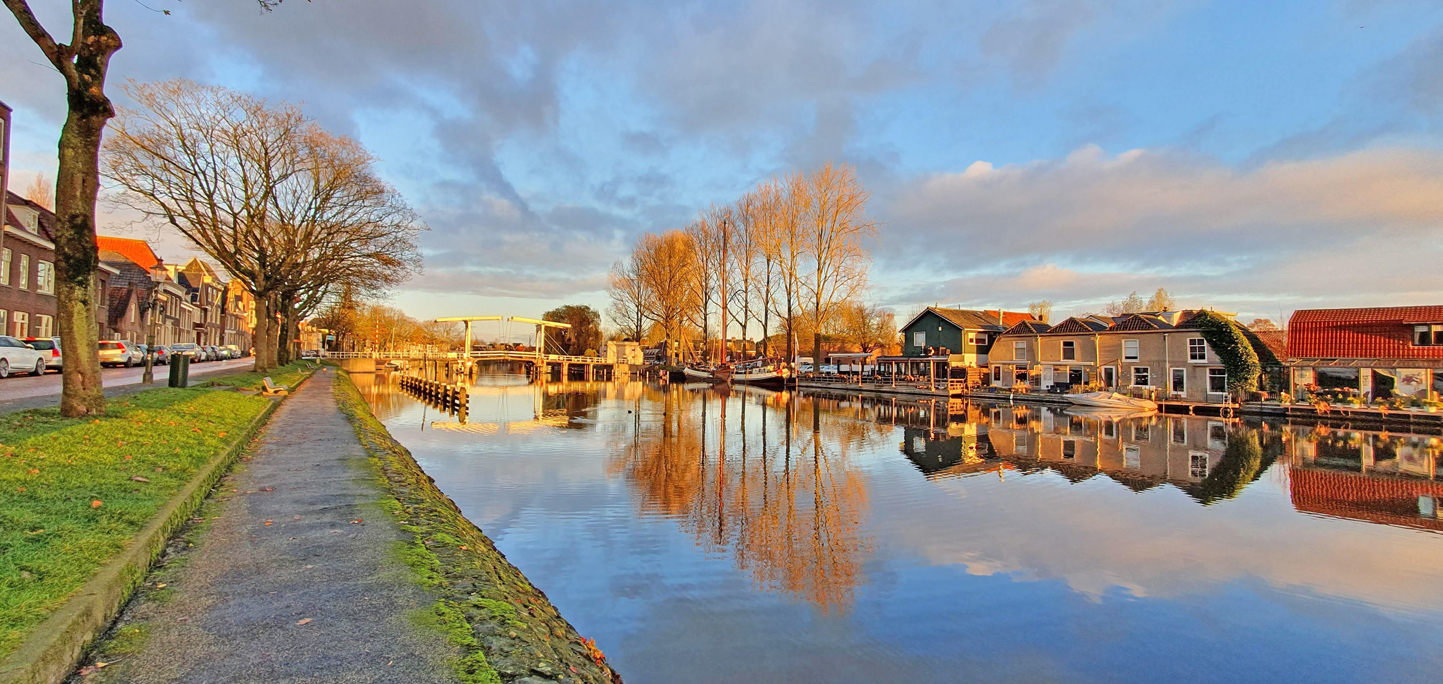Weesp is a Dutch town in the municipality of Amsterdam in the province of North Holland.Weesp is located by the Vecht and Smal Weesp rivers and also by the Amsterdam-Rhine canal.
Weesp is located about 15 km east of the city of Amsterdam, on the former Zuiderzee, of which an edge lake has been preserved. From Weesp to Utrecht you can take a boat across the Vecht or cycle along the banks of this river to Maarssen and Breukelen and take a tour of the many country houses and summer residences built by wealthy merchants between 1600 and 1850.
The city is famous for Van Houten chocolates, windmills, the historic center with its canals, Vesp is a popular stop for tourists. It has a protected historic center with canals and many buildings dating back to the 17th and 18th centuries. Vesp has three different sizes of historic windmills. It features a bastion and fortifications that are part of the Amsterdam defensive line and the Dutch water line. These structures have never been attacked. The Vecht River as well as small roads that are lined up attract tourists and cyclists. The Nardmer area is the first nature reserve in the Netherlands, and is a 15-minute bike ride to Vesp..
Access : Coordinates: 52.3, 5.05 / Located in the southeastern part of the province, immediately east of the Amsterdam-Rhine Canal, 3 km from Amsterdam.
Highlights :
- The town center of Weesp has more than 200 historical monuments, remains of bastions, as well as a fortress of the defense line of Amsterdam dating from 1861. The town church dates from 1462. The town hall is built between 1772 and 1776 according to the plans of the architect Leendert Viervant. Three old windmills are still present in the city.
- Weesp is located by the Vecht and Smal Weesp rivers and also by the Amsterdam-Rhine canal. It’s in an area called “Vechtstreek”. It is only 3 km from the end of the Amsterdam metro, but the great Amsterdam-Rhine canal keeps them geographically separated.The Vecht river loses over time its role in the transport of goods, replaced by the canal and other means of transport.-
- The Nardmer area is the first nature reserve in the Netherlands, and is a 15-minute bike ride to Vesp.
- Top sights in Weesp, Netherlands : Grote of Laurenskerk, Nieuwstraat 1. In its current form, the Great Church was consecrated in 1462 to the martyr and deacon Laurentius and Mary Magdalene. The church tower is much older, it dates from the 12th century.
- Van Houtenkerk NPB, Oudegracht 69. The church was built in 1906 in Neo-Romanesque and Art Nouveau by order of Mrs. J.S. and H.C. van Houten and has a special value as one of the last relics of the Van Houten era after the withdrawal of the cocoa manufacturer Van Houten from Weesp.
- Evangelisch-Lutherse Kerk-Evangelical Lutheran Church, Nieuwstad 36. Hall church with a wooden belfry above the front gable, built in 1818-1819.
- St. Laurentiuskerk, Herengracht / Synagogue, Nieuwstraat 3. The building that houses the Weesper Synagogue has a rich and eventful history. In 1774 the Jewish inhabitants of Weesp used a house synagogue on the Korte Middenstraat.
- fortifications : Bastions of Fortress Weesp. Bakkerschans, Nieuwe Achtkant, Roozeboom, Draaierschans./ Fort at Uitermeer, Uitermeer 1, Weesp. Located between the Vecht, the ‘s-Gravelandsevaart and the provincial road Bussum – Amsterdam / Tower fort at Ossenmarkt, Ossenmarkt 44. Tower fort from 1859 to 1861. Bombproof tower surrounded by a canal./ Various bunkers. 1939–1940 am Dammerweg, ‘s-Gravelandseweg.
- Sint Bartholomeus Gast- en Armenhuis, Gasthuissteeg 1/Nieuwstraat 43. Former hospital and poorhouse from 1623./ Old town hall of Weesperkarspel, Hoogstraat 24. The former municipality of Weesperkarspel (until 1966) had its town hall in Weesp
-Former porcelain factory, Kromme Elleboogsteeg 2. Weesper porcelain was made here in 1759-1770./ - mills : De Vriendschap, Utrechtseweg 11a.Octagonal gallery Dutchman (18th century/1900). The grain mill is in operation and can be visited on Saturdays from 10 a.m. to 2 p.m. and by appointment / De Eendragt, Utrechtseweg 13. This sawmill is in operation but cannot be visited./ ‘t Haantje, Korte Stammerdijk 17. Koker windmill with gallery (1820). Commissioned again in May 2003 after restoration. The mill cannot be visited.
- Museums: Gemeentemuseum Weesp , The first porcelain in the Netherlands was produced in Weesp from 1759 to 1768.The Van Houten factory was located in Weesp from 1850 to 1971. Open: Tue – Thu, Sat – Sun 1.30 p.m. – 4.30 p.m. Closed: January 1st, Easter Sunday, Whitsunday.
- Statue Garden/Open Studio Dirk van Someren, Ossenmarkt 18. Various visual artists are regularly exhibited in this exhibition garden.
- Automatenkabinett, Middenstraat 37. Jelle Zijlmans has collected around 500 automata and turned them into a museum.

